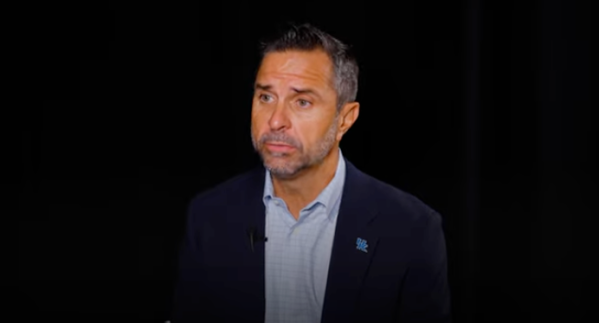- Sponsored
5G poised to transform defense logistics operations
The application of 5G technology to warehouse and supply chain logistics operations promises far more than faster communication speeds at federal and defense facilities. Rather, it represents an opportunity to transform a whole host of business processes, say experts in a new FedScoop executive interview series on accelerating modern government.
The ongoing modernization of the U.S. Marine Corps’ inventory management system offers a glimpse of 5G’s potential impact. Utilizing features from Microsoft Dynamics 365 Finance-based ERP solution, for instance — and assistance from KPMG, LLP — the U.S. Marine Corps is leveraging 5G’s ubiquitous connectivity to a multitude of devices to improve project accounting, procurement, data management, security and deployment planning.
Those types of improvements are beginning to prove pivotal in addressing three primary challenges at the Defense Logistics Agency, according to Manny Casas, R&D program manager for DLA, who talked about 5G’s potential in the video interview. DLA operates 24 distribution centers around the world. The work tied to inventory management, material distribution, and asset visibility at those distribution centers “is really labor intensive,” says Casas. “And it drives a lot of resources, operational costs, and labor costs,” which in turn, “impacts the ability to respond to the warfighter from the logistics perspective.”
Reducing those costs requires “looking at a system of systems,” linking robotics, artificial intelligence, augmented reality, cybersecurity controls, automation, and Industry 4.0 technology,” he says. “5G will be an enabler for these systems to communicate and transmit data more efficiently and effectively to the end user.”
“In the current 4G environment we have now, we can absolutely operate robots and conveyors and like equipment,” notes Chad Jones, Global Government Lead, KPMG. “But 5G allows us to connect to… machine-to-machine interaction. [That] allows us to engineer and optimize the equipment and the way it flows. For example, as we move robots and gear around the warehouse itself, or at DLA, we can optimize how that process takes place. This allows us to really increase the velocity and movement of gear throughout the warehouse. And if we extrapolate that into the 24 warehouses that represents DLA’s footprint, it really creates a force multiplier in its process.”
Casas and Jones discuss examples of where 5G is helping to improve military readiness; reduce operating costs; and sets logistics teams up to anticipate, rather than react to, material requirements. Also, they share recommendations on mitigating the risks associated with implementing 5G on top of existing systems.
Watch the entire interview and learn more about accelerating modern government at Modern government: Connected. Powered. Trusted. (kpmg.us).
You can also hear from more agency leaders on how that are making headway by capitalizing on emerging technology to modernize customer service delivery.
This video panel discussion was produced by Scoop News Group and FedScoop and supported by KPMG.
Some or all of the services described herein may not be permissible for KPMG audit clients and their affiliates or related entities. By viewing this video and any related materials on KPMG’s landing, you understand and agree that FedScoop LLC (d/b/a Scoop News Group) (“SNG”) shared your personal information with its sponsor, KPMG LLP (“KPMG”), pursuant to SNG’s Privacy Policy. You further understand and agree that KPMG may use your personal information for the purpose of providing you with marketing content and contact you about its services pursuant to KPMG’s Privacy Statement. To opt-out at any time, please contact: us-optout@kpmg.com.


